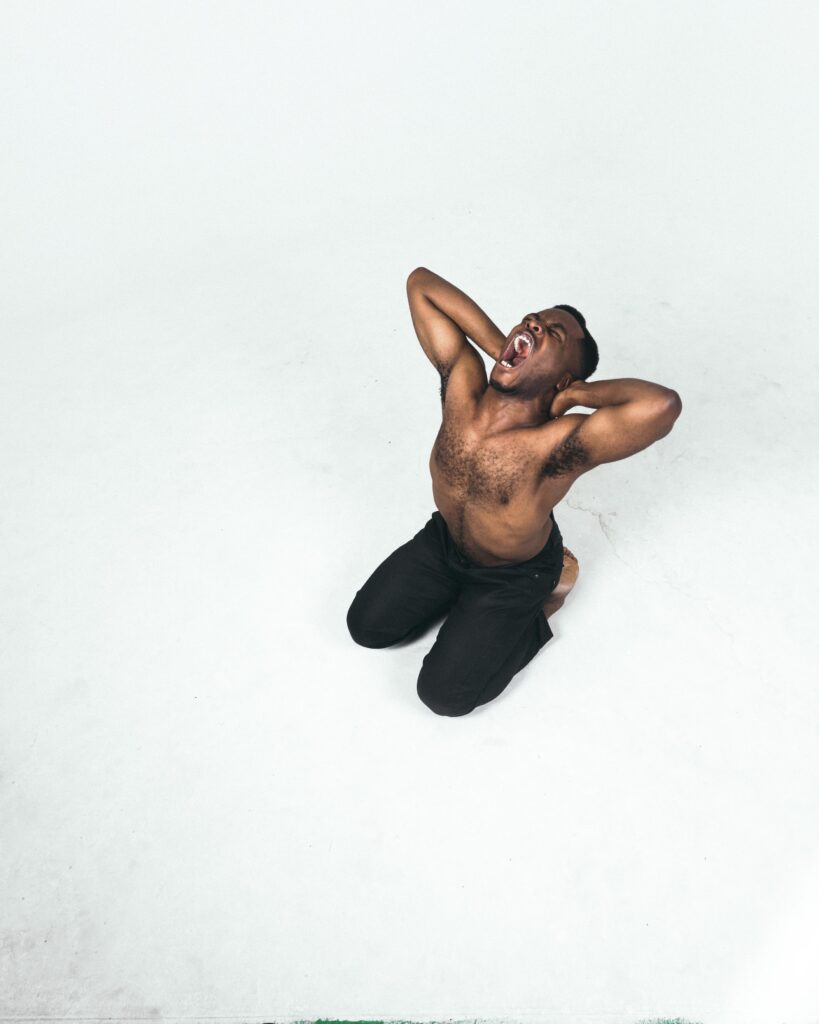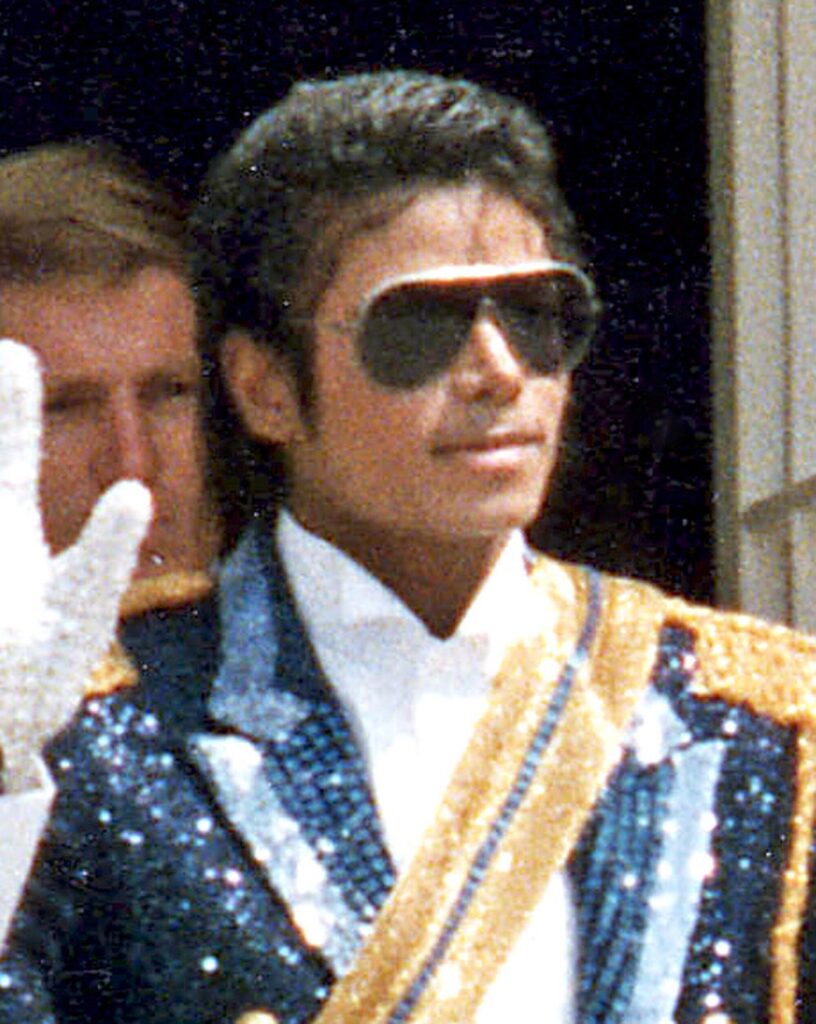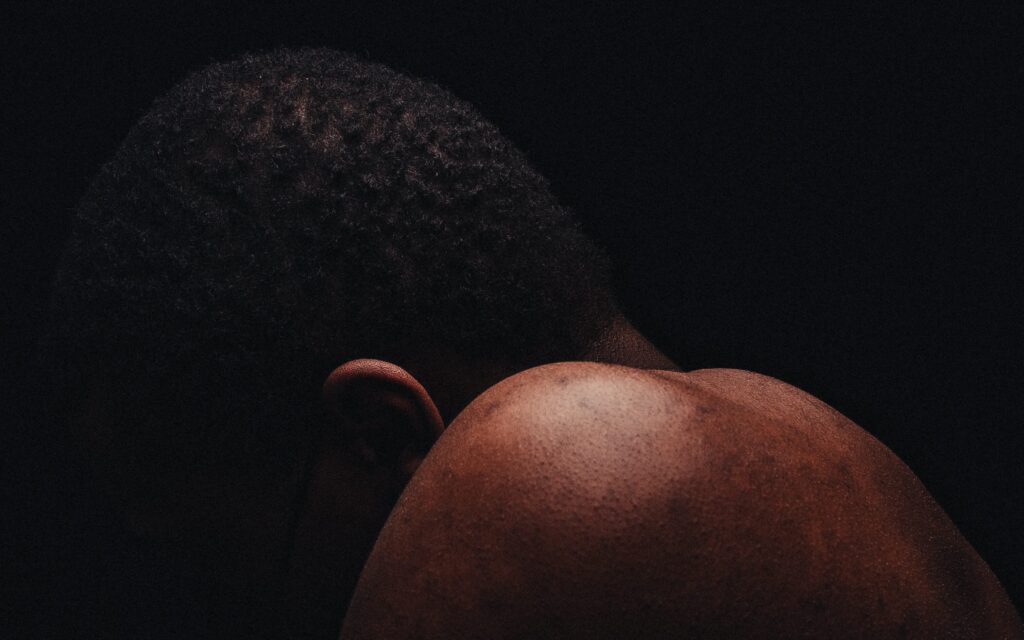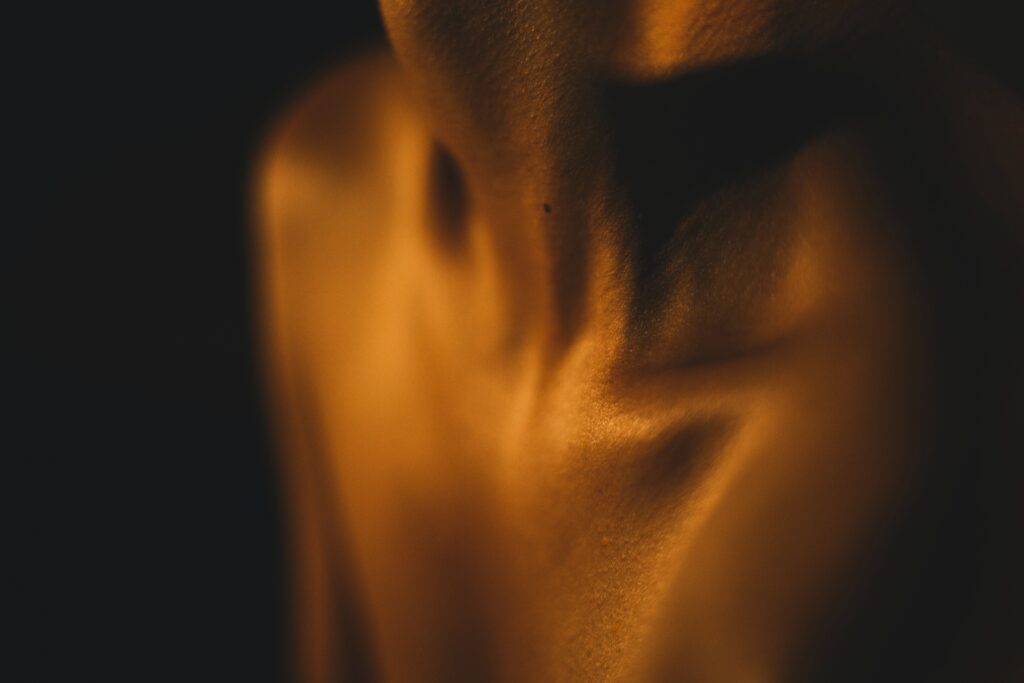Five Significant Films to Black Culture

By: Sydnee Walcott Movies are a unique form of entertainment that touch upon cultural, political, and social issues. The film industry has achieved mass success in culture that consumes its audiences. Films offer a dimension of relatable life lessons, struggles, and solutions that viewers appreciate. Since the early days of filmmaking, Black filmmakers have continued to create films that did not always relate to the Hollywood culture, norms, and standards. A variety of Black films explored topics such as Black identity and race while breaking down harmful stereotypes that were commonly perpetrated in mainstream movies. In the early days, a majority of Black filmmakers were independent and relied on their own revenues and local talent to help bring their films and cinematic vision to life. Although there is still work left to be done, Black filmmakers have come a long way in the industry with the memorable success they have provided. A majority of these films hold significance within the Black community. Outlined are five films with relevant plots that outline Black culture and its powerful significance. New Jack City (1991) Taking place during the crack of the epidemic in the 1980s, the dangers of drugs, and the impact addictions have on loved ones is not the only topic this film highlights. The film also highlights illicit activities drug dealers are willing to engage in to rise to the top of the drug trade. Nino Brown, played by actor Wesley Snipes, is a drug tycoon in the film, and operates an illicit drug ring under the name of The Cash Money brothers. As a ruthless and bold leader, Nino transforms his drug operation into a multimillion-dollar empire through his masterful efforts. Two officers, Scotty, played by Ice-T and Nick, played by Judd Nelson work as a team to bring down Brown’s operation by conforming to his plan and going undercover. Boyz In The Hood (1991) Boyz In The Hood is one of the first notable films to address the reality of life for African Americans. It is a coming of age story for those who grew up in inner-city areas from childhood. Some of the issues the film touches on are gang related violence, hate speech, police brutality, weak law enforcement, and gentrification. Tre is played by Cuba Gooding Jr, who is the main character of the movie. He is sent to reside with his father, Furious Styles, played by Laurence Fishbourne in the Crenshaw area of South Central Los Angeles, as a young child. Growing up in an inner-city area, Tre and one of his friends, Ricky, a talented athlete, have avoided trouble. However, the same cannot be said for Ricky’s brother, Doughboy, and their other friends who have engaged in constant trouble and rebellious acts. One thing that is very noticeable within the film is that Tre is fortunate to have a father who is willing to help him stay on the right path to avoid being another tragic statistic within the inner-city area. His father is able to provide the help, resources, and support to be an influential role model for Tre. This movie demonstrates that good parenting can provide guidance that is critical in the early stages of development among children. Waiting to Exhale (1995) While the four main characters of the film are excelling in their careers, all four of them have experienced shortcomings in their romantic lives as they struggle to find a good life partner to commit to. Savannah, played by Whitney Houston and Robin, played by Lela Rochon have engaged in relationships with married men with each of them hoping their lovers would part from their wives for them. While Bernadine, played by Angela Bassett is left by her husband for his mistress Gloria, played by Loretta Devine seeks love after her son’s father comes out as gay. In the end, Savannah and Robin realize the situation dealing with married men and accept the fact that it is okay to be single. Bernadine finds love with a widower and Gloria finds love with a new neighbour. Fun Fact: The soundtrack for the film consists of only female African American artists. The Princess and the Frog (2009) Based on the classic fairytale, this Disney animated film tells the story of a hardworking young woman named Tiana, played by Anika Noni Rose, who dreams of opening up a fancy restaurant in her hometown of New Orleans. Things take a different path when Prince Naveen, played by Bruno Campos, has been turned into a frog and begs for Tiana for a kiss after mistaking her for a frog. Tina turns into a frog and the two go on a mission in hopes to transition back to humans with the help of a powerful and magical voodoo priestess. What makes this film significant to Black culture is the fact that Tiana became one of Disney’s first Black princesses. This milestone is significant as it gives young Black girls the ability to embody that form of representation on the big screen. Black Panther (2018) Following the death of his father, T’Challa, played by Chadwick Boseman returns home to uphold his title as the King of Wakanda. When faced against a powerful enemy who plans to put the fate of Wakanda in a crisis, T’Challa must tactfully use his powers as king and as the Black Panther to defeat his woes and save his people. The film was recognized as a monumental moment for Black people as the film celebrated African culture, incorporated a diverse cast and director, and told the story of Black Panther, the first superhero of African descent and one of the first Black comic book characters. Each of these five films pay tribute to Black culture in various ways. They convey stories on the realities Black people face on a daily basis. They also celebrate Black culture and provide audiences with a diverse cast.
Four Rap Songs with Social Commentary

By: Sydnee Walcott Rap music is often looked down upon because of associations relating to drugs, nudity, and violence. Many often assume that rap music negatively influences individuals to become rebellious. However, not all rap songs perpetuate the aforementioned. In the 1970s, the emergence of rap music transformed the block party scene. Many DJs were heavily involved with incorporating rap music to amp up the ambience. Songs were centered around funk, soul, and disco, which attracted large audiences. DJs were involved with transforming the music scene to embody one that uplifted mood and promoted lively dances. A master of ceremonies would entertain the crowd and engage in rhyming and upbeat melodic tunes. The rap genre gained popularity after these efforts. In 1979, rap music received commercial success and recognition. One of the songs that attracted listeners was the release of The Sugarhill Gang’s “Rapper’s Delight.” Rap music and its success grew rapidly with the release of Kurtis Blow’s “The Breaks.” This song provided listeners with an upbeat tune and catchy chorus to dance along to. Starting off as music for parties and the disco scene, the genre took on a political scene during the 1980s. This was when Grandmaster Flash and The Furious Five advocated on their platforms about civil unrest that heavily impacted people residing in inner-city areas. In 1982, “The Message” became one of the first rap songs to be released that addressed societal issues involving poverty and socioeconomic disparities. This particular song paved the way for many upcoming artists such as Public Enemy, N.W.A, Tupac Shakur, and Kendrick Lamar to use their platforms to address political changes affecting communities. This article outlines four groundbreaking rap songs that contain powerful social commentary messages to a wide variety of audiences. Fight the Power – Public Enemy One of Public Enemy’s most reputable songs encompasses supporting Black pride and calling out negative cases of cultural appropriation. The lyrics encourage listeners, younger ones in particular, to develop strength and stand up against racial discrimination, stereotypes, and economic inequality. To match up to the song’s political critique, the music video was created in the style of a street protest, a form of collective action that activists normally engage in when taking a stand against social injustices and oppression. At the request of Spike Lee, the group wrote the song for Lee’s film Do The Right Thing, a movie that addressed social and political inequalities. Originally, Lee encouraged Public Enemy to record a version of the spiritual “Lift Every Voice and Sing,” but their producer, Hank Shocklee had different management plans. Shocklee had a vision to have the group record a song that would leave people blaring it while driving down Brooklyn. U.N.I.T.Y – Queen Latifah Misogyny is a distinct issue within the rap community that deserves more recognition. Women that have made significant contributions to the genre often get overlooked and have been placed at a disadvantage when achieving success. Although the music industry excels through talent, female rappers seem to only receive praise for their contributions if they are portraying seductive, bold, and daring images. In 1993, Queen Latifah addressed this issue with the release of her single “U.N.I.T.Y.” Besides addressing the misogynist attitudes within rap culture, Queen Latifah addressed street harassment, domestic violence, and negative slurs targeting women. Although this song addresses these issues, many continue to remain an issue in society to this day. Keep Ya Head Up – Tupac Shakur Not only did he stand up for his beliefs, Tupac Shakur carried this optimistic and intuitive mindset into many of his songs. Throughout history and into the present, Black women are often subjected to disrespect. What is problematic is how disrespect stems from Black men through neglect, a lack of protection, and colourism. Released in 1993, “Keep Ya Head Up” is an ode to Black women in hopes that they remain strong when confronting emotional abuse. The song rightfully calls out Black men who mistreat Black women and allows them to realize women are the ones who bare life and provide a family for Black men. The song also commemorates and pays tribute to Latasha Harlins, a 15-year-old Black girl who was shot arbitrarily and killed by Soon Ja Du. Du was a Korean store owner who wrongfully accused Harlins of stealing a bottle of orange juice, which spurred racial tensions. Sound of da Police – KRS-One The Black community and the law enforcement system have a complicated and unequal relationship. Challenges stem from an abuse of power enacted by the police. This abuse of power has led to heightened arbitrary arrests, fatalities, and acts of harassment and assaults targeted towards the Black community. Throughout history, many individuals have protested for reforms to the law enforcement system and to provide awareness that Black lives matter. One way individuals have held the police accountable is through powerful, symbolic, and meaningful songs. The 1993 single, “Sound of da Police,” by KRS-One is a popular song that addresses the root issues of police brutality and arbitrary arrests. The song begins with the sound of sirens — an alarming symbol to evoke fear and control over racialized communities. What particularly stands out about this song is that it advocates on behalf of the Black youth and addresses the connections between police brutality and enslavement. These four songs along with many others demonstrate that not all rap music perpetuates and promotes negative stereotypes. There are many different rap songs that can educate listeners on a variety of social and political issues.
POEM: The Melanin in My Skin

By: Lavanya Kathirgamanathan The Melanin in My Skin, Shines outside of me, and within Through the sun and the light, Melanin and I have always had a good night. – The glowing sun shines onto me. Filling my body with dopamine, serotonin, and glee Oh, how I love my Melanin in my skin, Glistening throughout, always with a win. – Sometimes, it is hard To show my Melanin to the world, Like a red card There is a barrier that shows How some people hate our skin, Only God knows… – Through the ups and downs, My Melanin will still make me proud, Like a kid in a candy store, Or a singer in a large crowd. – Whatever time of day it is, If I am ever stuck in a jam, The Melanin in My Skin, Will always make me who I am.
POEM: Paving the Way

By: Lavanya Kathirgamanathan In a world full of fear that intertwines, I pave my way, this path of mine Painting through with emotions, strong and bright I colour my journey with strength and might. – Through my struggles, Big and small, I rise above the weakness, Above it all Whatever challenge that I meet, I always find the courage, I will not retreat. – With the presence of prejudice, I fight Through the power of love, care, my bright light Dark shadows come towards the road Breaking the barriers, I will explode. – Every footstep, I touch a new ground Leaving footprints of strength, high and profound, Our coloured souls, filled with grace We rise above, for our race. – In unity, we shall overcome, Together strong, as one For our bright ideas, from our head to our shoelace, We will pave the way, Leaving our trace.
The Genius Behind: The Boondocks
By: Priscilla Wiredu On November 26, 2005, Writer and Cartoonist Aaron McGruder debuted a show that would change the way America views Black culture. The Boondocks, originally a comic strip by McGruder, tells the story of Huey and Riley Freeman, two adolescent Black boys who leave the southside of Chicago to live with their retired grandfather Robert Freeman in a white, suburban, affluent neighborhood. The differences in socioeconomic classes affect the boys and their grandpa in different ways that touch upon their personal growth and development. The cartoon itself remains a clever and insightful piece of social commentary on Black culture. It successfully addresses racial disparities and voices sensitive discussions about the treatment of Black people in America. This article will critically examine the genius behind The Boondocks. Cultural Impact The Boondocks is a rare gem of its kind as the show represents Black communities in both a self-reflective view and as a critique for corrupt systems, whether it be corporate, judicial, or even mere entertainment. The title derives from the term ‘boondocks’ which means ‘a quiet area in the country that occupies a few residents, far away from any town or city.’ In essence, Huey, Riley, and Grandad are boondocking in a foreign place that differs from the surroundings they grew up in. Each character confronts their own unique challenges and struggles that strengthen their character development. While Huey takes on a revolutionist approach, aiming to ensure Black nationalism and pride is showcased. Riley is heavily influenced by false Black stereotypes and chooses to listen to rappers, disrespect women, and act reckless to obtain money or fame. Grandad Freeman has learned in his golden years that hypocrisy is the only way to ensure the most comfort and is ultimately self-serving. McGruder claims that the interpretation of his characters and the messages he tries to convey are, while deep and fascinating, create controversies amongst Black audiences. From his Martin Luther King Jr. episode to the episode about R. Kelly’s trial, The Boondocks enacts an explosive dialogue about racial hierarchy within Black and American societies. Racial Satire The strength of The Boondocks satire lies within its ability to tackle issues in the Black community using stealthy forms of satire and humour. The Freeman family confronts racial disparities against white characters who aim to cause trouble among the Black protagonists. Mr. Ed Wuncler, a wealthy white realtor, is a living paradigm of predatory capitalistic practices. His grandson, Ed Wuncler III and his friend Gin Rummy are white wannabe gangsters who believe robbing banks, houses, and kidnapping are what Blackness embodies, with Riley conforming to these actions. Sarah Dubois, the white wife of Tom Dubois and mother of Jazmine act racist as they describe Black culture as ‘“urban” and use racial slurs regularly. It is a comedic reflection of the reality of those Black people who live in centralized white spaces. Black Identity Another imperative facet of this show is McGruder’s ability to illustrate Black characters that break free from negative stereotypes that can sometimes be viewed as one-dimensional. Black identities have a certain range within the show, and reasons for why these characters enact different personalities. McGruder does an excellent job at meshing stereotypes and simultaneously illustrating Black characters as intelligent and powerful characters within different plots. The relationships between the Black characters also allows audiences to think critically about the commentary. Huey is a revolutionist because he finds many parts of Black American culture to be more damaging than empowering. Riley is the opposite; he accepts all the misogynoir, the toxic hypermasculinity, and the obsession with money and criminal activity. One can argue that these boys act rebellious to resist conforming to the affluent, safe, white neighbourhood where they are guaranteed a ‘better future.’ The character’s dynamic helps shape the narrative that McGruder is trying to push; that resistance can take on different forms for similar reasons. Another example would be the representation of coonery that some Black characters enact in order to please white people. Tom Dubois, a Black lawyer, is the Uncle Tom archetype within the show. Dubois portrays a gentrified white-washed character who knows his place and appeases his white neighbors, coworkers, and society as a whole. He married a white woman to have a mixed child in hopes to assimilate to the white power structure and stray from his Black heritage. His covert self-hatred goes hand in hand with his wife, Sarah, who fetishizes Black men and their supposed criminality, evident in her love towards Usher and other rappers. Uncle Ruckus is said to be one of the most polarizing characters of the show. He is the parody of a white-worshipping, self hating Black man, an embodiment of self-hatred to the point it is almost parodying. Uncle Ruckus is insecure of his dark skin, any association with Black people, and consistently seeks approval from white people by talking negatively towards Black people. He was raised in a self-hating Black family, and believes that he had a ridiculous disease that had turned him Black when he was born white. The Boondocks takes on various issues that deal with social identity. The show reveals that there are multiple layers to Black identity that include why these characters believe discriminatory stereotypes. It further questions whether there is room for acceptance and change. Criticism Without a doubt, The Boondocks has been subjected to many controversies since its initial airing date. Many people believe that while some of the show’s characters and episodes are timeless in their meanings, there are also some outdated views on Black people and culture in America. Many earlier episodes were abstracted, especially within the Martin Luther King episode. Many Black viewers claimed that it was an insult to see Martin Luther King Jr. candidly talk down on Black individuals in the modern day. These comments were aimed at rejecting rap music and other Black aesthetics, seeing as they were more harmful than good. MLK Jr. would realistically make an attempt to understand how modern
The History of Motown

By: Sydnee Walcott During the 1960s there were political changes that were enacted during the Civil Rights Movement. Approaching the end of segregation, the rise of the Black Power Movement emerged and people began to notice many Black figures become more prominent within the entertainment industry. These efforts were recognized through a record label that would make history in breaking free from racial barriers. When it comes to recognizing Black intelligence, individuals like Berry Gordy Jr. inspire the public that there are many opportunities for artists to put forth their unique talent. He demonstrates an independent and self-reliant attitude when achieving goals that contribute to the success of Motown, a record label that brought many Black artists together. He also teaches young artists to take risks and follow their desire to create meaningful content that can change peoples lives. On January 12, 1959, Motown was founded in Detroit, Michigan, by Berry Gordy Jr., a former boxer and automobile worker, with the help of an $800 loan from his family. These careers provided him with the skillset to enact perseverance, patience, and a mastery of applying vast knowledge to fix various cars and defending himself that helped him keep up with the fundamentals of running an independent record label. The record label’s name was initially Tamla Records before it was changed to Detroit’s nickname “The Motor City.” Before Motown’s founding, Gordy was a R&B and soul songwriter who wrote songs for local acts in Detroit such as Jackie Wilson and the Matadors. Although Wilson’s single, “Lonely Teardrops,” achieved huge success, Gordy felt he was not compensated fairly compared to his other singles that he wrote for Wilson. Gordy realized that he could generate the wealth he wanted by producing records and owning the royalties for it. His passion for owning an independent record label was due to feeling limited in his writing capabilities and the talent he put forth signing with other artists. Gordy had a desire for breaking norms and setting the bar high when it came to producing quality content in the music industry. When Billy Davis and Gordy’s sisters, Gwen and Anna, created Anna Records, they wanted Gordy to be the company’s president. Berry declined the offer because he wanted to have an independent record label that he could own. This led to the birth of Motown Records. The Matadors, who became The Miracles, became the first act to sign to the record label with their lead singer, Smokey Robinson, becoming the label’s vice-president. During the same year of Motown’s founding, Berry purchased property on Detroit’s Grand Boulevard which would eventually become Motown’s original headquarters — “Hitsville U.S.A.” The label achieved rapid success with the release of its first hit “Money (That’s All I Want)” performed by Barrett Strong. In 1960, the release of The Miracles’s single, “Shop Around,” became the label’s first record to sell over a million copies to a wide audience. The following year, “Please Mr. Postman” by The Marvelettes would become the label’s first number one song, and their success continued to grow ever since. Throughout the 1960s and 70s, Motown Records was recognized all over the map including a variety of top-charting hits from artists and groups like: Smokey Robinson and The Miracles, The Temptations, Diana Ross and The Supremes, The Jackson Five, Marvin Gaye, Stevie Wonder, The Isley Brothers, and Gladys Knight and The Pips. The early 1970s saw changes for Motown when Gordy departed from Detroit and decided to relocate the label’s headquarters to Los Angeles, California, in 1972. Shortly after moving to Los Angeles, Gordy would dabble in the film and television industry with the founding of MoWest Records before becoming defunct in 1973. By 1975, many artists and groups had departed from the label, but Motown still continued to achieve success throughout the late 70s into the 80s with acts such as Lionel Richie and The Commodores, Rick James, Teena Marie and DeBarge. In June of 1988, Gordy sold his ownership of Motown Records to Music Corporation of America (MCA) and Boston Ventures for $61 million. This decision led to the label losing profit in the mid-1980s. Throughout the 1990s, they continued to include successful acts such as Boyz II Men, New Edition member Johnny Gill, 702, Brian McKnight and Erykah Badu. In December of 1998, Motown was folded into the Universal Music Group, and in 2005, merged with the label to establish the Universal Records Group where it continues to uphold a distinct legacy as a strong force in the music industry. This umbrella division of Universal Music oversees the catalogs for labels like Motown, Universal, Background, Republic, Cash Money, and Casablanca. During a period where significant changes were taking place such as the end of racial segregation and the emergence of Black pride, Motown Records stood out in the forefront to help break down racial barriers during the time and attract a diverse audience of music lovers. Motown’s legacy does not solely consist of being an opportunity for many Black artists to engage in. The label has established a political legacy for itself by bringing awareness to issues that occurred during the height of its popularity. This legacy inspires many Black artists and content creators to strive for new heights when it comes to musical entrepreneurship.
Moments Where Musicians Shut Down Racist Moments

By: Sydnee Walcott Celebrities are people with large platforms. They entertain their viewers through various creative mediums such as acting, music, and comedic acts. However, there are some artists who do more than entertain their audiences. It is not uncommon for celebrities to use their platforms to bring awareness to social issues. There have been key moments where celebrities have confronted racism, cultural appropriation, sexism, colourism, and disrespect. Musicians and artists tend to be some of the most vocal celebrities when it comes to taking a stand against something wrong. While musicians are widely known for entertaining their fans through their songs and onstage presence, there have been moments when they were not afraid to speak their mind and provide their insight on controversial topics. Black people have left an influential impact on the music industry yet continuously endure mistreatment within the industry. During interviews, there were musicians who were not afraid to stand up against racism in the industry. They further made efforts to call out interviewers for making insensitive remarks. Happy Mag created a video on some of the most notable moments where musicians have called out racism. Outlined is a breakdown of four moments featured in the video: Aside from her talent as a singer, Grace Jones is known for having a very bold and eccentric style with an extroverted personality. Some have stated that her iconic style inspired younger musicians to express themselves in the music scene. In an infamous 1980 interview with Television Presenter Russell Harty, Jones was a victim of disrespect from Harty throughout the interview. If Harty was not speaking to Jones with his back turned to her, he would make insulting comments about Jones’ outfit and sarcastically ask whether she ”calmed herself down,” given her eccentric style. She responded to the question by saying she is overestimated and told Harty to “try her.” Jones’ response reminds people why she is deserving of her celebrity status. However, there was a moment where she got violent and slapped Harty when she became exhausted from the excessive ridicule. In 1981, when MTV launched it was recognized for being one of the first channels to be completely dedicated to music. However, they garnered a negative reputation for their lack of diversity during this time. People noticed that Black artists were receiving little airplay for their music videos. MTV executives have denied these allegations and stated that it was not because of racism. They further argued that many Black artists did not fit the channel’s rock theme. The channel became more inclusive after the airing of Michael Jackson’s “Billie Jean,” but this feature was approved at a cost. CBS President Walter Yetnikoff threatened to have the record’s White artists pulled from MTV’s roster unless they played Jackson’s video. Yetnikoof was not the only notable person to address MTV’s lack of diversity. During an interview with the channel in 1983, David Bowie, who made a legendary title for himself as a pop star and fashion icon, called out the channel’s exclusion of Black artists and gave them credit on how they have transformed the music industry While Bowie was able to benefit from White privilege, he demonstrated exemplary humanitarian traits when using his privilege in a positive light. The first thought that comes to mind when people think of Whitney Houston are her groundbreaking vocals. Houston is well known for being an outspoken person who could be real with her audience. During a 1998 interview with CBC, Houston was labelled as “angry” by the interviewer, Laurie Brown. That was not the only insensitive comment during the interview. Brown also asked Houston if she felt as if she pursued the wrong business. Houston responded by saying she did not pursue the wrong business, but notes that she has dealt with the wrong people in the industry. “You sing them underneath the floor,” was one of Houston’s responses and mottos to Brown’s follow-up question on how she copes with dealing with the wrong people. Tupac Shakur is a rapper who is outspoken on injustices and social issues whether it is expressed through songs or during an interview. In a 1994 interview with MTV, Shakur was asked about how Hip-Hop transformed from being a genre that addressed social issues to a genre with an “I don’t care” type of lyricism. Shakur stated that things have not changed entirely and pointed out how there is only so much mistreatment one can handle before they get pushed over the edge. These four artists and their responses to racist comments are some of the most memorable and remind their audiences why these influential figures are reputable.
Iconic 80s Songs By Black Artists

By: Sydnee Walcott The 1980s was a memorable decade, filled with fun entertainment, talent, and laughter. The voluminous hair, eccentric makeup, vibrant hats, and colourful clothing, made the 80s unforgettable. This generation embodied pop culture that offered some of the most iconic movies like E.T., to groundbreaking television shows like The Cosby Show. The 80s is also known for being one of the best decades for music and entertainment with countless chart-topping hits. Some of these classic hits were sung by famous artists like Cyndi Lauper, Bruce Springsteen, Madonna, Lionel Richie, Prince, Whitney Houston and Michael Jackson. In 1981, the introduction to cinematic music videos increased in popularity. The popularity of music videos led to the launch of Music Television known as MTV. Many were fascinated that a song had the potential to tell a story that translated to a movie-like experience. They could visually see the lyrics being enacted on the front screen which allowed them to feel closer to some of the most influential Black artists today. Music videos transformed the music scene into one that was accepting of different styles, genres, and collaborations. MTV was one of the first music channels to air on television with a focus on music videos and other music-related content from top artists in the industry. In MTV’s earlier years, there were issues centered around diversity when it came to including artists of colour in relation to the videos the channel would air. Black artists were essentially receiving minimal air time and recognition for their talent on the channel. Popular Black artists such as Michael Jackson known as “The King of Pop” was not receiving enough air time for his performative music videos. Viewers and artists began to notice this disparity and were not afraid to hold MTV accountable for the lack of inclusivity. “We’re being sat at the back of the bus television-style,” said Rick James, who experienced a shut down of his music videos on MTV for his songs “Give It to Me Baby” and “Super Freak.” David Bowie defended James and called MTV out on their lack of diversity during an interview with the channel. “I’m floored by the fact that there are so few Black artists featured on [MTV]. Why is that?” said Bowie. MTV executives denied allegations centered around racism existing on the platform and expressed it was not the reason why Black artists received little airplay. The channel stated that their music did not fit the channel’s rock-based genre. During this period, J.J Jackson was also included as a main African American on their roster of video jockeys. Michael Jackson’s “Billie Jean” became one of the first music videos introduced by a Black male artist. He broke down the barriers to achieve success in artistic performance among musicians. Although his song gained success, his journey to reach fame included many difficult challenges. CBS Record President Walter Yetnikoff reportedly threatened to pull his rock artists from MTV if they did not play the music video for “Billie Jean.” It has been stated that if the channel did not air the music video, it would have faced financial issues that would have led to the channel being defunct. Once MTV began to air more music videos from other Black artists and diverse genres of music, the channel began to gain additional viewers and success. Given the rise to fame, Black artists have contributed whole heartedly and immensely to the music industry. However, there are times where their talent is overlooked. With influential platforms like YouTube, their ancient music videos remind us of their dedication to reach success in the music industry. Outlined are a list of some of the most iconic songs among Black artists in the 1980s: Thriller – Michael Jackson Starting off his career as a member of The Jackson Five, Michael Jackson gained ground breaking success during the 1980s. Jackson’s 1982 album, “Thriller,” is one of the best selling albums of all time and held a position on the top charts for 37 weeks. The album’s seventh and final single, “Thriller,” was an iconic song accompanied with an artistic music video which set the precedent in how quality music videos are made filled with culture, design, and cinematography. The inspiration behind the music video’s theme was from the horror-comedy film American Wolf in London. The film’s Director, John Landis, also directed and helped Jackson brainstorm the design, cinematics, and dancing sequences for the song’s music video. “I wanted to be a pioneer in this relatively new medium and make the best short music movies we could make,” said Jackson when talking about his hit single in the 1988 memoir Moonwalk. Almost 40 years after its release, the “Thriller” music video still secures its popularity on the charts with people continuing to perform the choreography annually around Halloween time. The Message – Grandmaster Flash and The Furious Five The roots of hip-hop can be traced back to the late 70s at block parties located in The Bronx, New York where DJs would create their own twist on soul and funk records. The genre would take off in 1979 after the release of “Rapper’s Delight” by The Sugarhill Gang. In 1982, the genre would take a different route with the release of “The Message” by Grandmaster Flash and The Furious Five. At the time, most hip-hop songs were recognized as party songs. However, “The Message” would soon become one of the first hip-hop songs to feature lyrics with social commentary. The lyrics of the song address issues of poverty, systemic racism, crime, and the struggles people face in the inner city. Affluent people claim that they are from “the hood” however, songs like “The Message” remind listeners that inner city areas should not be glamourized. The song reminds listeners that the inner city areas continuously go through struggle. When Doves Cry – Prince Prince was a talented artist who could sing and play the keyboards, drums, and bass. Besides reaching the top charts, he was also
Poetry: FIGHTING FOR MY RIGHTS

By: Lavanya Kathirgamanathan Freedom for me Is not always Granted. I always wonder, How would it be? Then again, I am dark skinned Not a lot of Good outcomes. For my skin colour Or the way I look Right now, My mind is thinking, Intrusive thoughts, Yelling, Screaming. Reasoning with myself that It is okay, it has Got to happen, but Hopefully one day There is an end for the fight To be seen, heard, loved Someday, it will.
Poetry: My Brown Skin

By: Lavanya Kathirgamanathan My Brown Skin Born with power Melanin queen Every day, every hour People may look at me But that is fine Ignorance is bliss And this skin is mine for life. My Brown Skin Holds truth and fear Sometimes it worries me What might be near, Racism, Colourism, Discrimination, and more, Why would I suffer when Brown skin is everything I live for? My Brown Skin Makes me who I am Sweet like chocolate, Walking the streets with a BAM! The intrinsic beauty lies Within the colour of skin, Why do some people Think it is a sin? My Brown Skin Is filled with joy Like a kid in a candy store, Or even getting a toy Walking down the street With a smile, filled with glee I am one of a kind, Who else will there be? My Brown Skin, Is a blessing to my heart It holds my personality, And I am a work of art No one should ever Bring you down for your looks If fear arises against you, Look at them and smile with confidence, Ignore them, and leave them bewildered.
